|
|
Post by Admin on Nov 3, 2016 3:09:33 GMT
Quote:Oedipus as medieval knight attacking the Sphinx, early 13th c. "Histoire ancienne jusqu'à César" via @britishlibrary 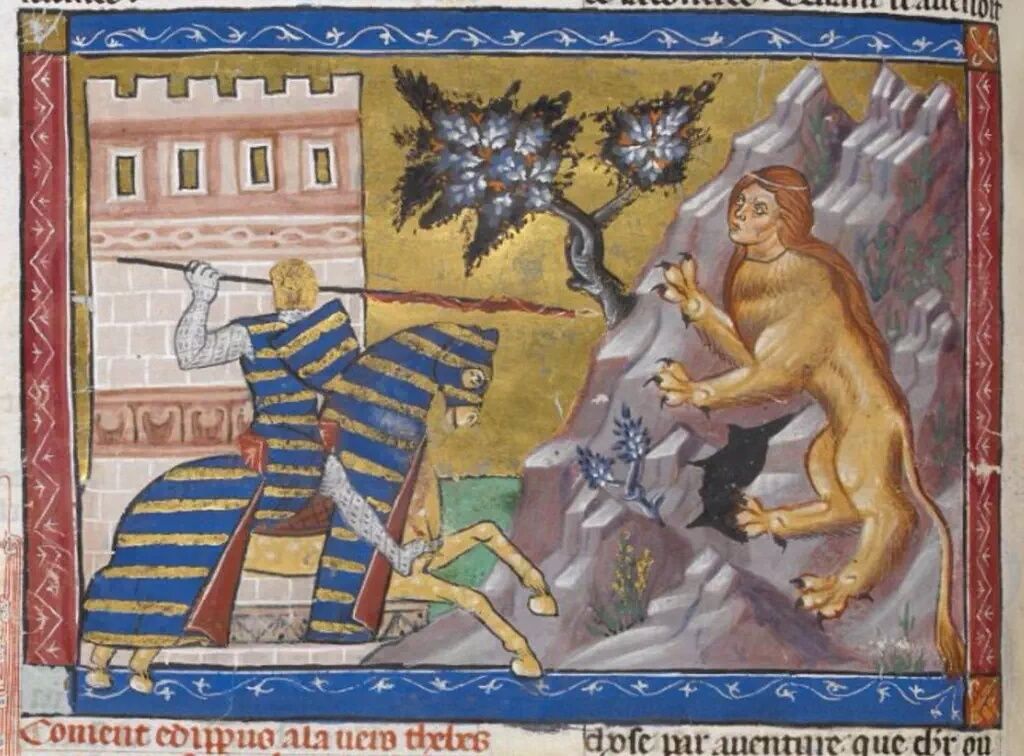 Thanks to: Theslo of Qualon cf. Neat Pictures: added more! [adultish]
|
|
|
|
Post by Admin on Nov 3, 2016 10:38:50 GMT
|
|
|
|
Post by Admin on Nov 4, 2016 0:40:54 GMT
Quote:This owl belongs to the people ΔΕΜΟΣΙΟΣ / DEMOSIOS -Attic black-figure amphora, 500 BC @holland_tom #OwlsInAntiquity 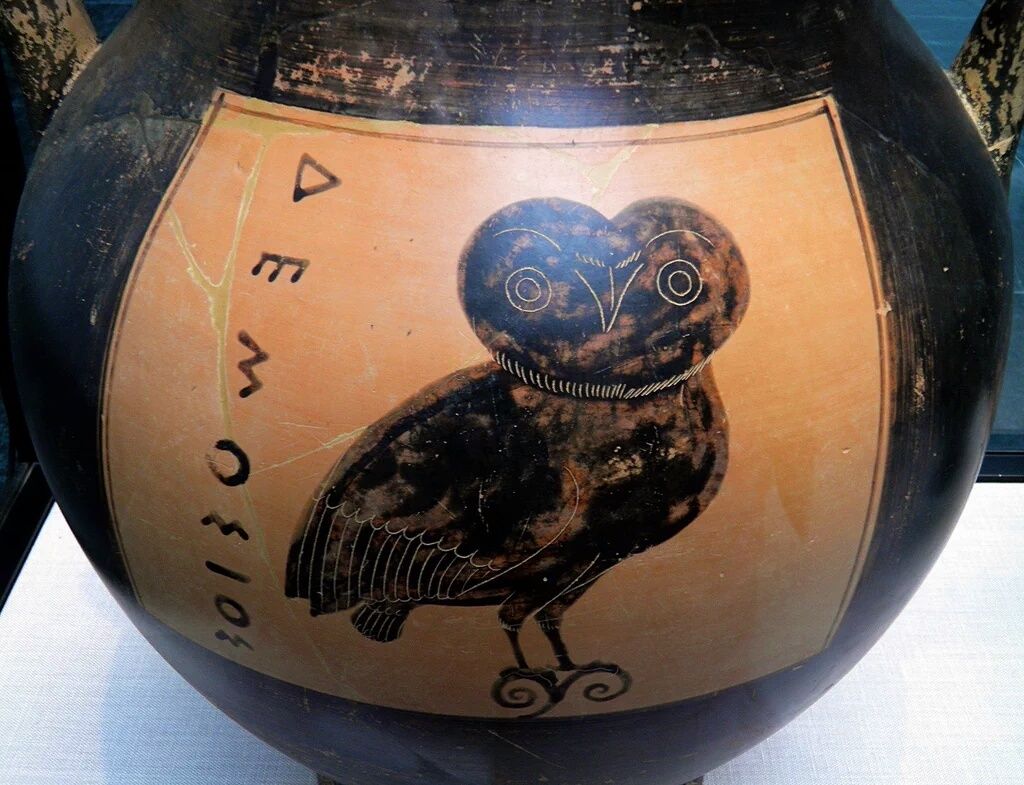 Thanks to: Theslo of Qualon cf. Neat Pictures: added more! [adultish]
|
|
|
|
Post by Admin on Nov 4, 2016 1:02:47 GMT
Quote:Corinthian aryballos (perfume-holder) in the shape of an owl, ca. 630 BC #owlsinantiquity 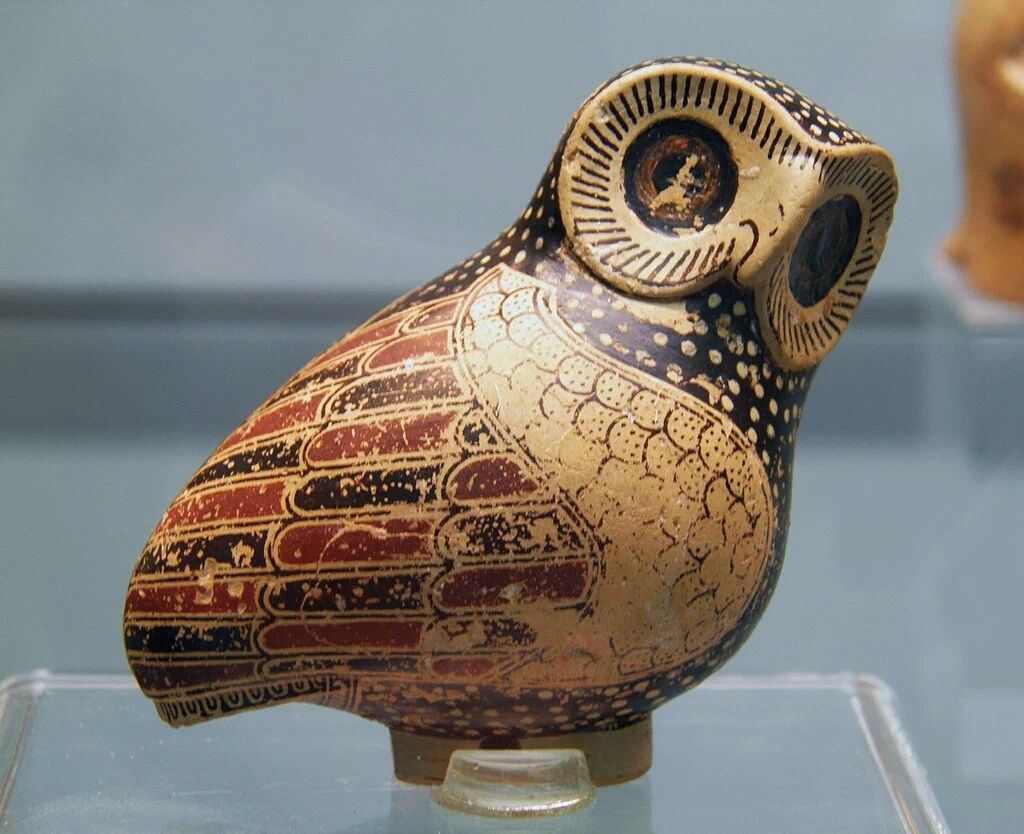 Thanks to: Theslo of Qualon cf. Neat Pictures: added more! [adultish]
|
|
|
|
Post by Admin on Nov 4, 2016 1:19:47 GMT
Quote:More on griffin warrior tomb at Pylos: photos, a video, list of finds, & excavators here: t.co/ENvbJi14Jp Early Mycenaean tomb found at Pylos - the richest undisturbed grave in decades! t.co/HbBuofiU083,500-year-old warrior prince tomb is 'most exciting Ancient Greek find for decades' t.co/XDk35P0Uc6 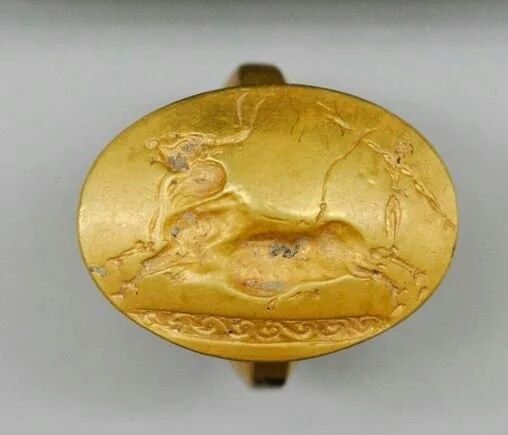  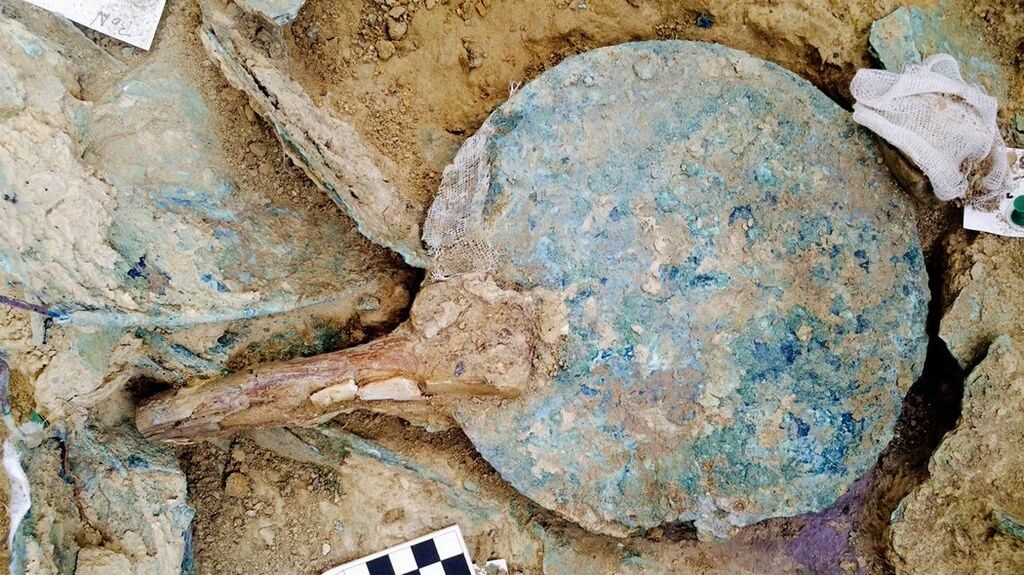 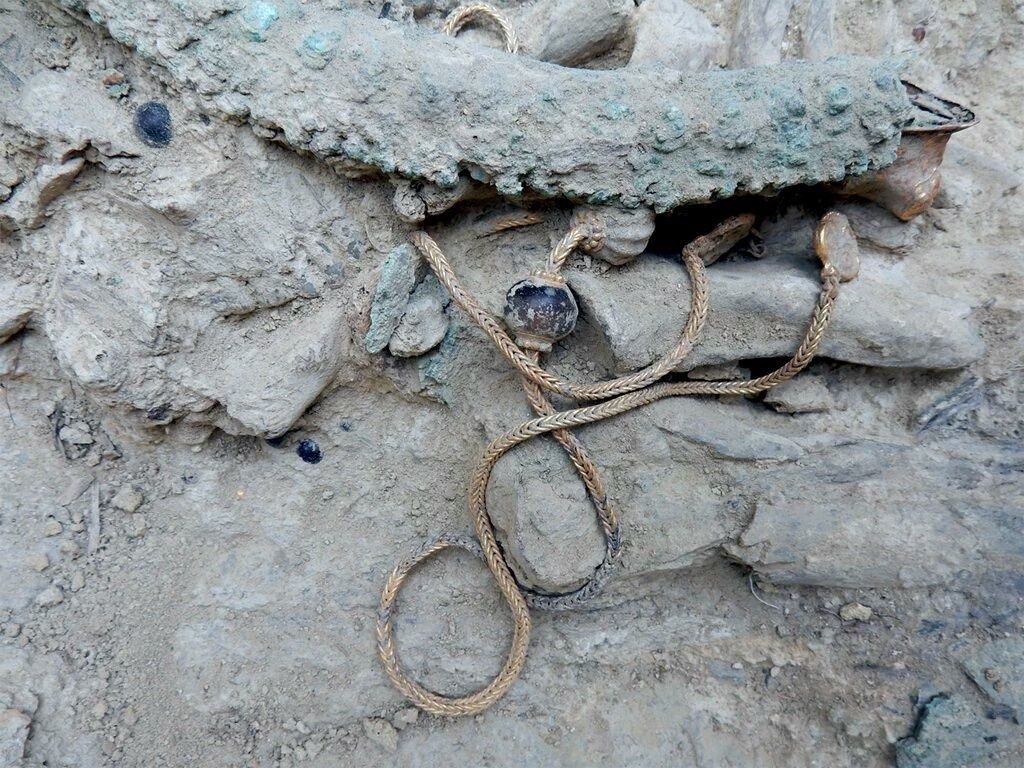  Thanks to: Theslo of Qualon cf. Neat Pictures: added more! [adultish]
|
|
|
|
Post by Admin on Nov 4, 2016 1:52:32 GMT
|
|
|
|
Post by Admin on Nov 4, 2016 4:43:12 GMT
Quote:Thomas Cole's The Course of Empire (1833–36) - The Arcadian State 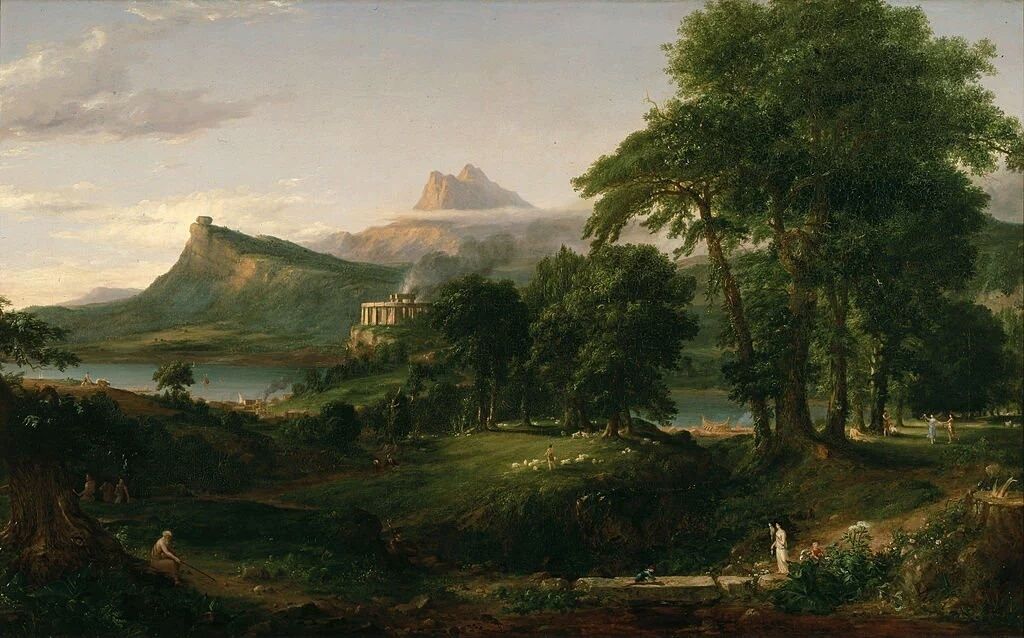 Thanks to: Theslo of Qualon cf. Neat Pictures: added more! [adultish] There is a gate to Arcadia, in Arcadia.
|
|
|
|
Post by Admin on Nov 5, 2016 9:06:01 GMT
|
|
|
|
Post by Admin on Nov 5, 2016 17:18:49 GMT
Quote:2,000 year old mosaic of Plato's famous academy in the house of Siminius Stephanus at Pompeii 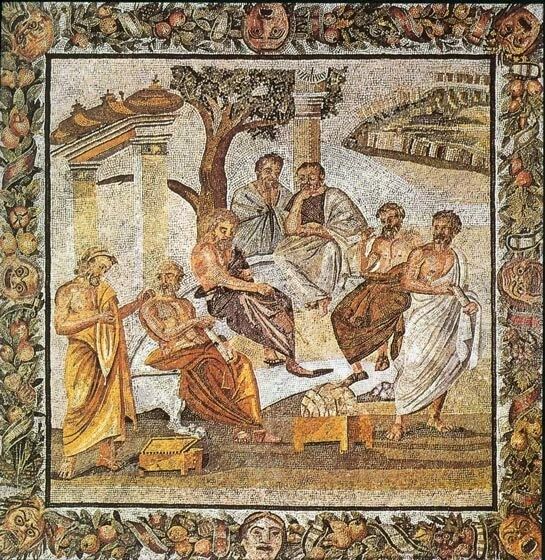 Thanks to: Theslo of Qualon cf. Neat Pictures: added more! [adultish]
|
|
|
|
Post by Admin on Nov 7, 2016 0:45:41 GMT
|
|
|
|
Post by Admin on Nov 8, 2016 8:00:22 GMT
Quote:Psychostasia: gold scales engraved with butterflies - psychai, for weighing the souls of the dead, Mycenae, 16th BC 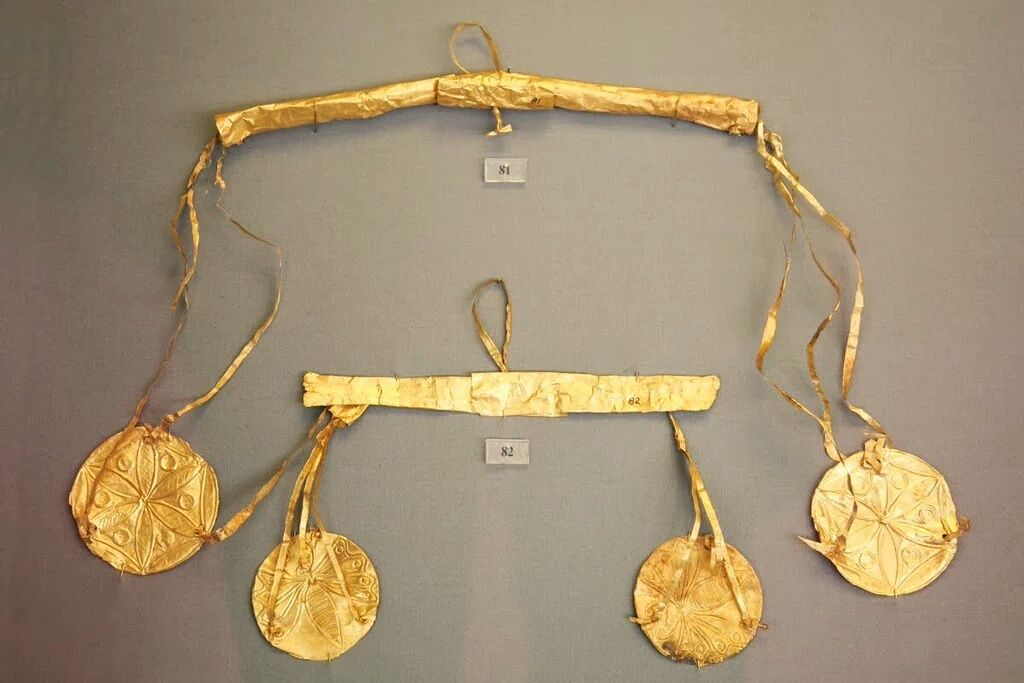 Thanks to: Theslo of Qualon cf. Neat Pictures: added more! [adultish]
|
|
|
|
Post by Admin on Nov 9, 2016 7:54:47 GMT
Quote:Silver rhyton in the form of a centaur, Hellenistic ca. 160 BC (Vienna Kunsthistorisches Museum). 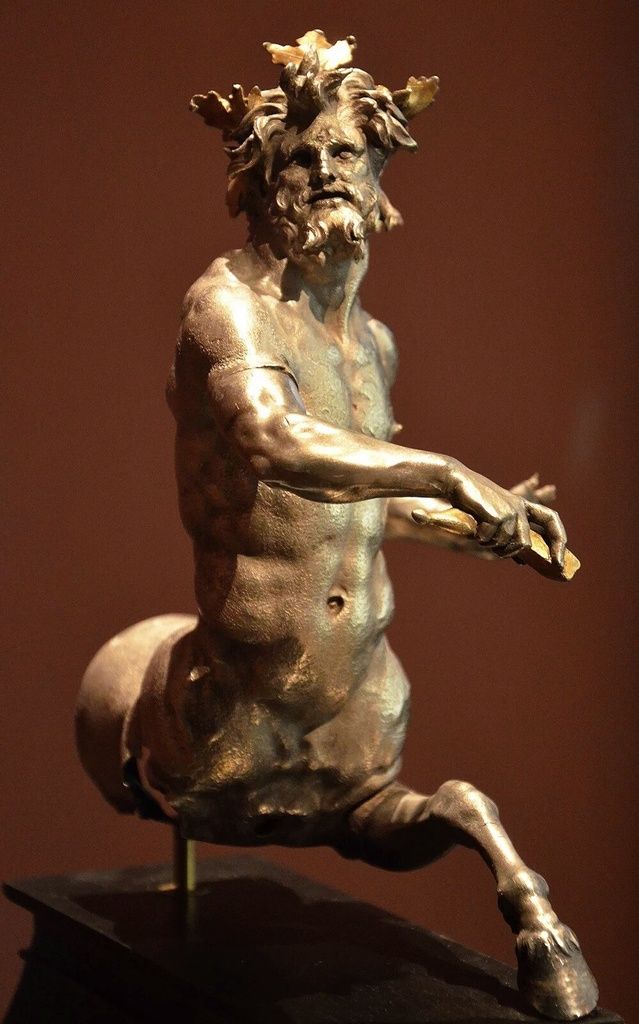 Thanks to: Theslo of Qualon cf. Neat Pictures: added more! [adultish]
|
|
|
|
Post by Admin on Nov 11, 2016 9:39:19 GMT
ALIGNMENT: Neutral
|
|
|
|
Post by Admin on Nov 17, 2016 2:41:58 GMT
|
|
|
|
Post by Admin on Nov 17, 2016 3:50:14 GMT
Quote:Terracotta Etruscan relief depicting scenes from the myth of the Seven Against Thebes. From Pyrgi, 470-460 BC. t.co/uBrDpuJrPE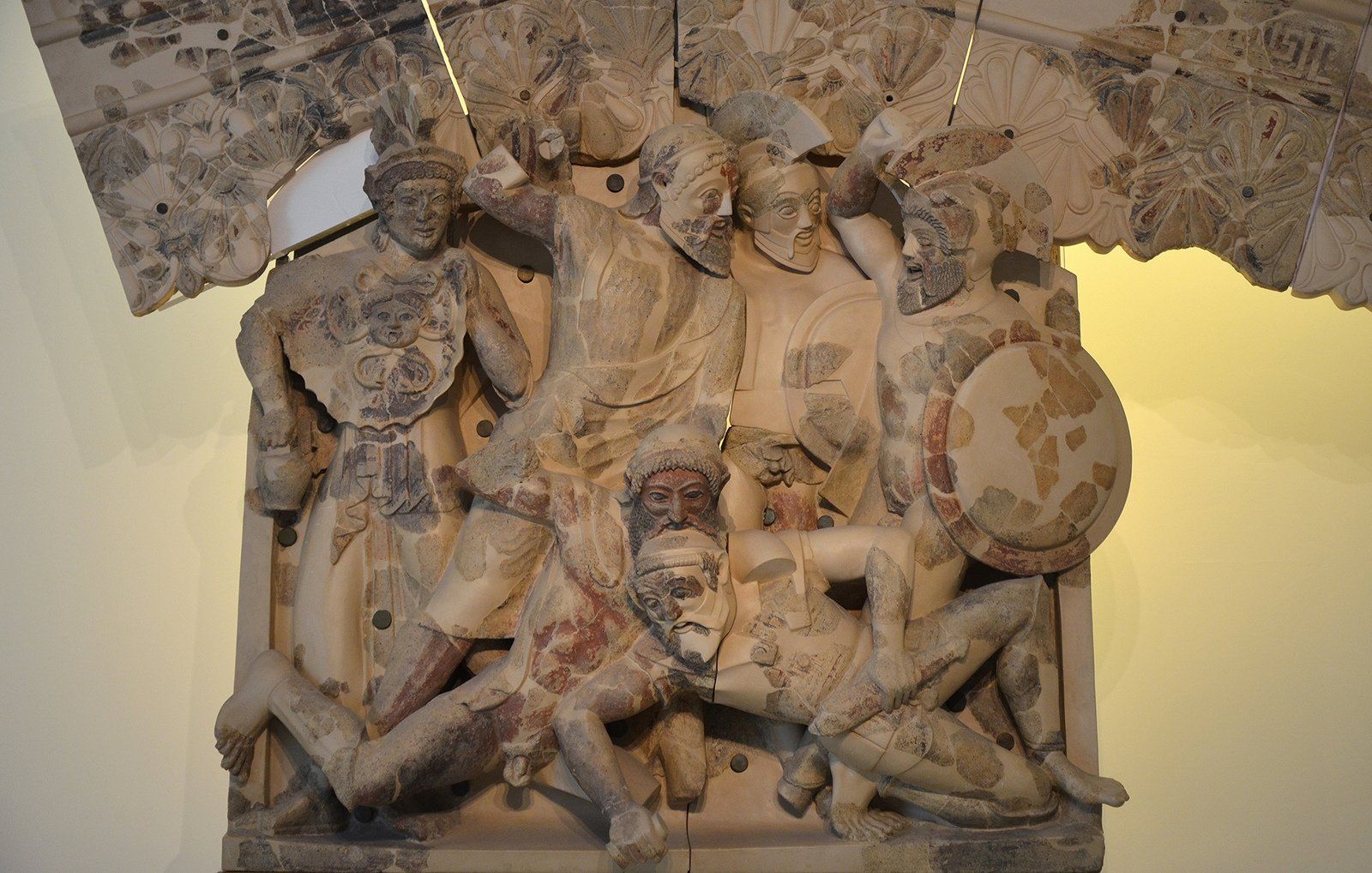 Thanks to: Theslo of Qualon cf. Neat Pictures: added more! [adultish]
|
|
|
|
Post by Admin on Jan 8, 2017 19:47:02 GMT
Treasury of Atreus, Mycenae.  |
|
|
|
Post by Admin on Jan 19, 2017 13:09:35 GMT
From: Epic of Aerth Addenda, by Gregg Timm. Achæa (pg. 64) The city state of Sparta maintains a special force of 300 elite hoplites in honor of the ancient Battle of Thermopylae, and due to their rigorous and abusive training these warriors all add +10 to their PM Cap, +5 to Combat, Hand Weapons, One-handed sword (xiphos) K/S and +5 to Combat, Hand Weapons, Shield (aspis) K/S. These elite are largely regarded as the most deadly warriors known, equaled only by the best samurai of Nippon, and said not to fear combat even at 1000-to-1 odds! The Spartans are also said to hold the minor artifact Helm of Leonides, which acts as a helm with +10 protection for all damage types including electrical (Ultra-vital, Super-vital), grants 10 joss to its wearer and instills utter fearlessness in its wearer and all allies within a 100 foot radius. |
|
|
|
Post by Admin on Feb 5, 2017 7:20:11 GMT
|
|
|
|
Post by Admin on Feb 5, 2017 7:20:55 GMT
|
|
|
|
Post by Admin on Feb 5, 2017 7:49:51 GMT
Source: HR6
Athens
Attica, the region in which Athens lay, did
not suffer the Dorian invasion. The city prospered from silver mines nearby and enough
farmland to raise some grain, grapes, and
olives. The harbor at Peiraeas opened the city
to a futurein trade. In the eighth century B.C.,
Athens began to import large quantities of
grain to feed her populace. Olive oil, marble,
pottery, and finished products were exported.
Though originally under a monarchy, over
time the large land owners formed the Council of the Areopagus, which quicklybecame the
dominant power. Once in power, they abolished the monarchy. Because the council
members were wealthy, they were able to survive the relatively long time it took for olive
orchards and vineyards to produce usable
crops. Imported grain was quite costly, and
most people could not afford it. Small farmers
were forced into debt, into serfdom, or into
outright slavery when they could not repay
the debts they had incurred.
The urban middle class sided with the
peasants and called for governmentalreform.
Aside from the Council, the senior officials of
Athens were called archons. They served as
magistrates, administering the law. In 594
B.C., to address the concerns of the people, an
aristocrat named Solon was appointed chief
magistrate and empowered to make reforms.
Solonchanged the laws writtenby Draco over
a century before, and wrote a constitutionfor
Athens. Among the alterationswas the establishmentof a councilknown as the Four Hundred, which admitted the middle class as
members. The lower classes were given the
right to serve in the Assembly. A final court of
appeals for criminal cases was created which
was open to everyone and elected by popular
vote of all free adult males.
Some of Solon's most significant reforms
were to cancel existing debts of poor farmers
&& to outlaw enslavement for debt from that
point on. The amount of land which an individual could own was restricted, and a new
system of coinage was introduced. Athenian
citizenship privileges were offered to any foreign craftsmenwho would set up permanent
residence in Athens, and all men were instructed to teach their sons a craft or trade.
Though they were accepted, Solon’s reformsfailed to please everyone. The nobles
complained that their powers had been reduced, while the middle and lower classes
complained because the Council of Areopagus still held power. Public outcry and discontent eventually led to the takeover by
Athens’ first tyrant, Peisistratus, who promised
stable government and enrichment of the city.
In 560 B.C., Peisistratus, backed by a great
many citizens, usurped the government of
Athens. Called a tyrant because he had acted
illegally in taking control, Peisistratus ruled
as a benevolent dictator. Under his rule, the
City Dionysia was begun (see page 58) and
the power of the nobles was further reduced.
His son Hippias was cruel, however, and in
510 B.C., he was overthrown by a group of
nobles who received aid from Sparta.
A noble named Cleisthenes emerged as the
leader, and two years later he presented his
reforms to the people. Cleisthenes has been
called the ”father of Athenian democracy”
because his reforms granted full citizenship
rights to all free men living in Athens. A new
council was formed to act as the main governmental power, with control over the administrative portions of government and the power
to prepare proposals to the Assembly.
Members ofthe Councilwere chosen by lot,
and any male citizen over 30 was eligible.The
authority of the Assembly was also expanded.
It could request money for certain projects,
reject or approve proposals made by the
council, and declare war.
More reforms continued as the common
people found themselves in control of their
own lives for the first time. In 487 B.C., they
instituted ostracism, which allowed a popular
vote to exile anyone deemed dangerous to the
state for 10years. In 462 B.C., the man who
was to guide Athens through her golden age
rose to power.
Pericles was elected Chief Strategus (president or chief general) of the Board of Ten Generals chosen by the Assembly. These were the
commanders of the army and the chief legislators for Athens. Under Pericles, the Assembly was given the right to initiate proposals as
well as approving or rejecting those of the
Council. Magistrates’ powers were reduced to
simply officiating over trials rather than acting as the judge. Instead, at the start of a new
year, a list of 6,000 citizens was chosen by lot.
From this, juries were formed to hear cases,
though unlike modern juries, these ranged in
size from 201 to 1,001 men who met to hear a
particular trial. Majority vote decided the
final verdict.
Despite the many new freedoms given to
the citizens of Athens, many were disenfranchised. The citizen population of Athens was
a minority which consisted only of free males.
Women, foreign residents, and slaves were all
excluded. At this time in its history, Athens,
birthplace of democracy, had about 50,000 citizens and 100,000 slaves. It has been argued
that without slaves to perform the manual
labor of the city, Athenians would never have
had the leisure time to develop the arts, theories of government, and philosophies which
became their crowning achievements. Regardless of how many slaves Athens possessed,
however, Sparta was suspicious of Athenian
ideas of freedom.
In 445 B.C., Sparta and Athens agreed to a
30-year truce. Athens continued with her
empire-building, however, and Sparta came
to distrust about Athenian intentions. Where
Athens was progressive and expansionist,
with an advanced urban culture, Sparta was
conservative, inclined to protection rather
than expansion, and still tied to agriculture.
Athenians reveled in their freedoms, while
Sparta proudly continued its policy of selfdenial and sacrifice.To Athenians, Sparta was
old-fashioned, barbaric, and reactionary;
Sparta saw Athens as wanting control over
the Peloponnesian states and inciting the
helots to rebellion with their dangerous new
ideas. The spark which lit the Peloponnesian
War, however, was not a direct result of their
cultural differences, but Athens’ attempt to
control the Corinthian Gulf, the main trade
route to Sicily and Italy.
Corinth, Sparta’s chief ally, contested the
attempt, and playing on Sparta’s fears of
Athenian imperialism persuaded Sparta to
make war on Athens. In 431 B.C., Sparta’s
army invaded Attica, prepared to do battle.
Pericles persuaded Athenians not to join battle, but to withdraw behind Athens’ walls.
Knowing they could not defeat Sparta’s army
in a land battle, they resolved to meet them at
sea and provide for the city by importing
grain from the Black Sea region and Egypt.
The Spartans devastated the land, th
They continued forays for six years.
From430 to 423 B.C., plague came to Athens
probably brought aboard the grain ships from
Egypt. A quarter of the population of Athens
died cooped up behind their walls, among
them Pericles who had guided Athens for
over 30 years. He was succeeded by Cleon
and Nicias. They continued Pericles’ plan,
refusing to meet the Spartans on land while
winning several battles at sea, and refused to
accept Sparta’s suit for peace.
After a series of inconclusive battles, the
Peace of Nicias between Athens and Sparta
was made in 421 B.C. It was to last for 50
years. Apparently believing itself free to
resume its expansion, Athens invaded Sicily
and lay siege to Syracuse. Sicily appealed to
Sparta for help, and in 415 B.C., the war resumed. The next year, the Athenian army in
Sicily was destroyed, and its general Nicias
was executed for his incompetence.
Wishing to punish Athens for earlier insults and interferences, and seeking to regain
power in Asia Minor, Persia offered to finance
Sparta’s fleet in return for recognition of Persia’s claim to the Ionian states of Asia Minor.
Since these states had traditionally been allied
with Athens, Sparta quickly agreed. With
Athens’ army demolished, Sparta now looked
to vanquish her at sea. With military precision, Sparta set about cutting off Athens’
shipments and forcingnaval battles.
The Spartans extended a final offer, which
was rejected. At Aegospotami, the Spartans
destroyed Athens’ navy in 405 B.C. A year
later, its grain supplies cut off, left without an
army or navy, its trading empire in ruins,
starving Athens surrendered unconditionally.
Athens was placed under the rule of a group
of pro-Spartans known as the Thirty Tyrants,
her fortificationswere destroyed, and she was
made a subject state of Sparta. Sparta now
held sway over all of Greece and set up oligarchies which were supported by Spartan
troops in place of democracies. They confiscated property and executed those who opposed them. Though Athens overthrew the
Thirty Tyrants within a year and reestablished their democracy, most of the rest of
Greece was dominated by Sparta for 30 years.
Athens would never recover her political
power, but continued as a center for intellectual and artistic achievement.
In 400 B.C., Sparta sent mercenaries to aid
the King of Persia’s brother Cyrus in his bid
for the throne. Defeated at Cunaxa, the Greek
army of10,000 managed an epic retreat under
general Xenophon. Nevertheless, this signalled war with Persia. In 395 B.C., a coalition
of Athens, Thebes, Corinth, and Argos, reacting to years of Spartan abuse, was formed.
Funded by Persia, the coalition met Sparta in
battle the next year at Coronea. Sparta’s great
general Agesilaus barely managed to defeat
the coalition troops. Persia, beset elsewhere,
eventually let the war wane.
In 371 B.C., the Theban army under their
great general Epaminondas defeated Sparta
at the Battle of Leuctra. This signalled a decline in Sparta’s fortunes from which it never
recovered. Thebes briefly gained ascendancy .
and began the same sorts of abuses as the
Spartans. Once again the other states rose to
battle, and in 362 B.C., they fought at Mantinea. The battle was inconclusive, with both
sides claiming victory, but Epaminondas was
killed; left leaderless, the Thebans were unable
to hold onto their gains.
All the bickering && constant warfare had
left the great city-states exhausted && weak,
however, && by 350 B.C., they began to feel
the shadow of the power looming to the
north, as Philip of Macedon, father of Alexander
the Great, began his bid to rule all of Greece.
|
|
|
|
Post by Admin on Feb 10, 2017 15:36:29 GMT
DIROS CAVES, PELOPONNESE, GREECE"These eerie caves, covered with jagged rock formations, are a site for archaeological researches. Their resemblance to the "mouth of the underworld" from Greek mythology, coupled with the fact that they may have been used as a place of burial in Neolithic times, makes them really unnerving." (Source: The deadliest places on earth) 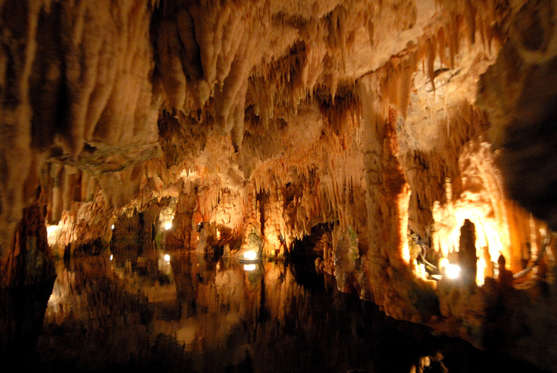
|
|
|
|
Post by Admin on Feb 10, 2017 18:28:45 GMT
Zarglos the Fat
A slave dealer originally from Ziva, on the north coast of Afrik, he is currently in Athens, but can be found anywhere on around the Mare Librum. He smells awful, and has an evil pet monkey named Barfalot. Zarglos specializes in black Afrikkans, who he castrates, and, white virgins, which he keeps pure for his high-paying customers in Byzantium. He trades in children of all kinds, as well. Zarglos is one of the more desipicable characters of the Mare Librum, and, it would be doing a lot of people a big favor, should someone give him a good and final stabbing. Note that the front for his slaving operation is in fact another slaving operation, one that deals in the more common kinds of slaves, ones that will not arouse the ire of local authorities. Rumors have it that he deals in exotic non-human slaves, such as sprites, umplebys, and, even flumphs! In (A)D&D terms, consider him to be a 5th level merchant.
S: 10
I: 10
W: 10
D: 4
C: 9
CH: 13
(Raise to class minimums, if needed).
|
|
|
|
Post by Admin on Feb 10, 2017 18:58:56 GMT
Metaxa (Greek: Μεταξά) is a Greek spirit based on brandy blended with muscat wine from the Aegean Islands and natural flavorings. It is exported to over 65 countries and it is among the 100 strongest spirit brands worldwide.[1] 
|
|
|
|
Post by Admin on Feb 13, 2017 10:17:04 GMT
The Theatre of Dionysus Eleuthereus is a major theatre in Athens, built at the foot of the Athenian Acropolis.  |
|
|
|
Post by Admin on Feb 18, 2017 6:46:15 GMT
Centaurs are found in the cities of Achaea, incl. Athens. 
|
|